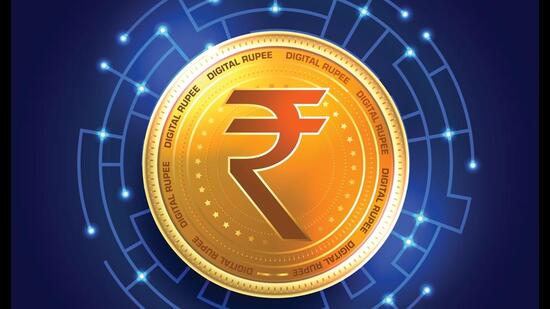Digital rupee can transform India’s financial transactions
CBDCs are sovereign-backed currencies, ensuring settlement finality. They can also be converted into any other form of money.
The Reserve Bank of India (RBI) has launched the e-rupee (e ₹-R) Central Bank Digital Currency (CBDC) for the retail segment. RBI stated that the pilot will test in real time the robustness of the entire process of digital rupee creation, distribution, and retail usage. The central bank, earlier in November, also launched a CBDC pilot for the wholesale segment (e ₹-W), for the settlement of secondary market transactions in government securities.

The launch of these currencies comes against the backdrop of months of deliberations since the finance minister’s announcement of CBDC in the 2022 budget. RBI then released a comprehensive concept note regarding their functionalities and norms of issuance. Both pilots have reportedly had smooth starts. e ₹-W will be used for the settlement of interbank transfers and related wholesale transactions, and is designed for restricted access to select financial institutions. e ₹-R is designed to be an electronic version of cash, primarily meant for retail transactions and would be available for use by all private sector, non-financial consumers and businesses.
e ₹-W is an account-based system, with each participating financial institution holding a CBDC account in RBI. They will transfer money from their current accounts to the e-rupee account, which will act as the node for all their digital rupee transactions. e ₹-R will be issued as tokens, each representing legal tender, equivalent to various denominations of currency notes and coins. They will be distributed by various banks and could be used by users for peer-to-peer (P2P) and for peer-to-merchant (P2M) transactions. These currencies issued will be seen as liabilities in the balance sheet of RBI, unlike the private cryptocurrencies that lack central bank backing. A few days after the release of the CBDCs, RBI deputy director T Rabi Sankar remarked that these financial instruments could be an effective manner to counter the threats posed by private digital currencies to investors, systems and the economy. This might prove to be an overambitious mission.
CBDCs are sovereign-backed currencies, ensuring settlement finality. They can also be converted into any other form of money. These are the advantages they have over other payment systems, and will further decrease the settlement risks in our financial transactions. However, they offer zero interest, similar to what holders of physical cash receive. Meanwhile, cryptocurrency investors join the bandwagon by taking substantial risks amid high volatility. They hope for windfall gains that were once the norm during sustained periods of market bull runs.
CBDCs could still create several disruptive improvements. Their settlements would happen on the same day when compared to the next day transactions of government security trades. There will also be savings of thousands of crores by cutting down on the printing of currencies. For instance, each ₹100 note currently has a cost of ₹15-17 in its life cycle. They will also contribute towards improving transparency and financial inclusion. Offline capabilities could be integrated into CBDCs to increase their penetration in remote areas. These programmable instruments also leave a digital trail which can be used to ensure that budgets are utilised for their planned purposes, and reach their intended beneficiaries. This function, however, raises privacy concerns, as it could be used to track and profile citizen-spending habits. We could take a leaf out of an earlier European Central Bank experiment of a CBDC with elements of programmable money. Individuals were allotted a certain amount of “anonymity vouchers” that could be used for small transactions, with larger transactions still visible to financial intermediaries and authorities, including those responsible for Anti-Money Laundering (AML) and Combating the Financing of Terrorism (CFT). Some reports have suggested that RBI has asked banks not to track low-value transactions made via the digital rupee.
There are several other related initiatives ongoing around the world. China leads the pack with their digital yuan (e-CNY), already having acquired hundreds of millions of customers, and having made transactions worth billions of dollars. They have also announced the creation of a global blockchain-based service network (BSN) that would be a universal digital payment network to support various CBDCs. The central banks of Israel, Norway and Sweden are together testing a retail CBDC. The Bank of International Settlements is doing a pilot with multiple commercial banks of China, Hong Kong, Thailand and the United Arab Emirates. Brazil, Russia, India, China, and South Africa (Brics) countries have recently discussed a common supranational CBDC. In November, the US Federal Reserve also announced the launch of a 12-week concept pilot.
Interoperability between various CBDC platforms would be a game-changer. It would lead to an expansion of global trade, as payments would become cheaper and faster. India is the world’s largest recipient of remittances, at $87 billion in 2021. CBDC payments would decrease our settlement risks, alongside bringing significant cost and time savings during our cross-boundary transactions. CBDC payments can also create profound geopolitical and geoeconomic impacts. Countries will be able to easily transact by bypassing dominant reserve currencies, and SWIFT and CHIPS systems. These trajectories could pose the biggest long-term challenge to the global hegemony of the US dollar, which has existed since the end of World War II, and the core of the Bretton Woods system.
Anil K Antony is a tech entrepreneur, policy commentator and works on Congress’s digital initiatives. The views expressed are personal
All Access.
One Subscription.
Get 360° coverage—from daily headlines
to 100 year archives.



HT App & Website






